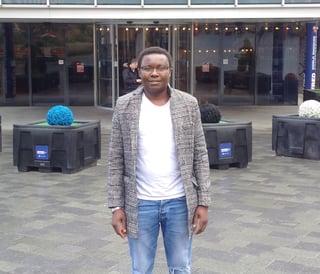Adaptive Design CONSORT Extension Project: The Inside Scoop


In April, we interviewed NIHR research fellow Munya Dimairo about the paper, ‘Adaptive designs undertaken in clinical research: a review of registered clinical trials’ (Hatfield et al, 2016), for which Munya was a co-author.
During the previous interview, we discussed the barriers to uptake of adaptive designs, and the urgent need for a cross-sector discussion and work on reporting guidance of adaptive design. As a follow up to this, Munya is now Lead Investigator of the ACE project which aims to develop a consensus-driven reporting guidance tailored for Adaptive designs in the form of a CONSORT extension. The ACE Project is funded by the NIHR and is led by a multidisciplinary Steering Working Group of international experts in collaboration with the CONSORT Executive Group and the MRC HTMR Adaptive Designs Working Group. The goal is to enhance transparency, credibility, reproducibility, and replicability of adaptive trials as well as facilitate uptake of ADs in clinical trials research when appropriate.
We are delighted to welcome Munya Dimairo back to the blog to give us the inside scoop on this project.

It's good to have you back Munya. Can you give us a brief overview of the ACE project?
We have realized that actually there are a lot of issues with adaptive design in terms of uptake. We wanted to try to mitigate some of the barriers in order to improve the uptake of adaptive design and enhance the credibility of adaptive design in practice. We also wanted to enhance interpretability of the results from adaptive designs and the usefulness of case studies. Because if we are saying, "Okay, we want more adaptive design case studies," but the case studies are not being reported well enough then we’re not actually bridging the knowledge gap that people are really concerned about. So we thought it was a good idea to try to improve the reporting of adaptive designs. Then, even if we have a few case studies of adaptive designs which are very well reported, people can learn from those designs, and they can be comfortable with the findings from those case studies. Also, people could reproduce and repeat the trial and produce similar results.

So who is involved in the project?
The initiative brings different key stakeholders together from industry, the public sector, the regulators themselves including FDA, PMDA, and also including those who are involved in the design and conduct of clinical trials. The aim is to try to come up with some sort of guidance document to improve the reporting of adaptive design in form of an extension to the CONSORT 2010 statement. The idea is to try to come up with a list of items that we need to include when we are reporting adaptive design. Then we need to include stakeholders’ opinions on how important these items are in terms of their inclusion in the document. We want to be inclusive, so we're going to involve the pharmaceutical industry, the public sector, trialists, statisticians, etc. to hear their views - we need buy-in from all the key stakeholders.
Will the main output of the project be the guidance document?
There will be a checklist with a list of items you need to report in terms of the adaptive process and also an explanatory document to support the checklist items. i.e. Why do we need those items to be reported? In January we will have a meeting with about 18 stakeholders, as part of the steering group committee and come up with an initial list of items that are really important. Then, we’ll send out that list to a group of experts to get their input. That's the first stage. After that, we're going to design a survey which will go out over maybe 2 or 3 rounds capturing opinions regarding the importance of the potential reporting items.
Munya goes on to explain that using the survey there will be several rounds of feedback with a group of experts which will result in a final checklist of the most important items as agreed by the consensus.
Have you had a lot of interest already?
Yes, the main aim is not for us to decide what is really important for people. I want to be inclusive and involve as many views as possible.
How will you proceed once you have the guidance document and checklist?
As part of our Steering Group committee, we have Prof Doug Altman who is Chair of the CONSORT Executive Group; we'll publish the checklist in a medical journal, but it will also be hosted on the EQUATOR Network website (http://www.equator-network.org/) and on various platforms.
Because the CONSORT guidance is linked to journals as well, after that stage we expect it will be used by more than 70 percent of the medical journals as part of the peer review and publication process. We also need to market the document and plan to do a number of presentations at conferences to promote the guidance. The main thing is, we want people to be aware that it is there for them to use it.
Once this is in place, will the project follow up, and review what improvements have been made following the guidance?
We will have post-publication activities. It’s something that I'm interested in doing because we need to monitor the use of the guidance document and see if there is any useful feedback, are there any problems that we're facing or observed benefits ? Do we need to modify the checklist?

What sort of direct or indirect impact can you see it having on the perception of adaptive design?
That's a good question. I think about it in different ways. If you know how to report something better, then it means you can design the trial with that in mind- that at the end of the day, you need to report it. So indirectly, you are trying to improve the design and conduct of the adaptive designs. We want transparency, so the first thing that we want to make sure of is that we report adaptive designs in a transparent manner so others can understand what you have done with the design. If we do that, then they will be more comfortable because they know exactly what has been done with the design and conduct of the trial. Credibility of findings from adaptive designs is very important.
At the moment, the way some adaptive designs are reported, you don't know what decision-making criteria were used to adapt the trial or the scope of the adaptation itself. You can't even identify if the appropriate methodology was used in terms of statistical analysis. It is very difficult to tell. I think there are different ways we can bridge this practical knowledge gap so that researchers can easily learn from these innovative trial designs. Unless we do that, then I think we're missing a trick. So the hope is also to improve the appropriate uptake of adaptive designs in clinical trials research.
How can people get involved?
Anyone who wants to get involved in the project is free to get in touch by sending me an email. By the beginning of March, we hope the survey will be ready and at that point, we would want to get in touch with those people who have registered their interest in participating.
Interested parties can find out more about the ACE project and obtain contact details for Munya Dimairo by clicking the link here.
https://www.sheffield.ac.uk/scharr/sections/dts/ctru/aceproject
Liked this? Subscribe to our blog by clicking the link below.
Further reading:
Cytel blog: Adaptive designs in practice
Cytel blog: Overcoming challenges of less well understood adaptive designs


